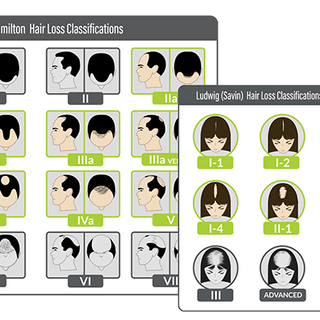
Aaron Collins spent $6,000 to fly to Istanbul and have 4,100 hair follicles extracted from the back of his head and implanted into his scalp. He researched carefully, chose a licensed clinic, and made sure an actual doctor would oversee the procedure. He was one of the lucky ones.
Turkish Airlines has become so synonymous with hair transplant tourism that passengers often joke about referring to it as "Turkish Hairlines." Scan the cabin on any flight from Istanbul to London or New York, and you'll spot them—bandaged heads, newly transplanted hairlines hidden under baseball caps, people who traveled thousands of miles for a chance at looking younger, more confident, more like their former selves.
The global hair transplant tourism industry pulls in billions of dollars annually. Turkey alone generated roughly $1 billion in 2023 from people seeking affordable hair restoration. The math seems simple: pay $3,000 for a procedure in Istanbul instead of $13,000 in New York. Get the same result. Save ten grand. What's not to love?
Except the math is never that simple. And the result is rarely the same. Then there's the invisible cost, the one that doesn't appear on any invoice: risk.
The Black Market Problem
The International Society of Hair Restoration Surgeons has been sounding alarms for years about what they call "black market" clinics. These aren't back-alley operations in sketchy neighborhoods. They're polished establishments with sophisticated websites that rank high in Google searches, complete with testimonials and before-and-after photos that may or may not belong to actual patients.
Here's the disturbing part: in many of these clinics, the person holding the surgical tool isn't a doctor. They're "technicians"—sometimes with minimal training, sometimes with none at all. A recent review published in medical literature described the hair transplant tourism industry as operating in a "data black hole," with permissive regulatory environments, a lack of standardization, and virtually no oversight.
The failure rate for hair transplants, when performed by experienced surgeons with proper training, sits around five to ten percent. Nobody tracks the failure rate at unlicensed clinics because they don't report their data. But the anecdotal evidence—the stories of infections, scalp necrosis (tissue death), overharvested donor areas, unnatural hairlines—suggests it's significantly higher.
The Biology of Distance
Even if you find a reputable clinic overseas, biology doesn't care about your travel itinerary.
Hair transplantation involves three phases: extraction, storage, and implantation. The follicles need to be stored in a cooling solution immediately after extraction. They need to be implanted within a specific timeframe. The recipient sites need to heal without infection. Your immune system needs to accept the transplanted tissue without triggering excessive inflammation or rejection.
All of this requires careful post-operative care—keeping the scalp clean but not too clean, avoiding direct sunlight, sleeping at the right angle, taking medications on schedule, and watching for signs of infection.
What happens when complications arise and you're 5,000 miles away from the surgeon who performed your procedure?
You find a local doctor who's willing to take on another surgeon's work—which means paying out of pocket for consultation fees, potential corrective procedures, or medication adjustments. Many doctors are reluctant to handle complications from overseas procedures because the liability gets murky. You might have signed waivers in another language, in another country, under another legal system.
Continuity of care—the idea that your surgeon should monitor your healing and address problems as they emerge—becomes functionally impossible when your surgeon lives across an ocean.

The Alternative That Sits on Your Head
While thousands of people were booking flights to Istanbul, a different approach to hair loss was quietly accumulating clinical evidence.
Low-Level Light Therapy—shining specific wavelengths of red light on your scalp—doesn't involve surgery. No incisions. No extraction. No implantation. No recovery period is required.
The FDA has cleared laser therapy devices for treating hereditary hair loss. Not "approved" in the pharmaceutical sense, but "cleared," meaning the agency reviewed clinical trial data showing that these devices increase terminal hair counts over time with continued use.
Here's what happens at the cellular level: red light at around 650 nanometers penetrates the scalp and gets absorbed by mitochondria in your hair follicles. Those mitochondria produce more ATP—cellular energy—which helps struggling follicles function better. Blood flow increases. Inflammation decreases. Follicles that were barely producing wispy vellus hair start producing thicker, darker terminal hair.
It's not magic. It's photobiomodulation, a well-documented biological process that's been studied in everything from wound healing to muscle recovery. Applied to scalps, it helps reverse some of the cellular dysfunction that causes hair loss in the first place.
When Surgery Makes Sense
This isn't an argument that hair transplants are bad. When performed by experienced, licensed surgeons using proper technique, they work. They can dramatically improve the quality of life for people with advanced hair loss. The results are permanent.
But "when performed by experienced, licensed surgeons" is doing a lot of work in that sentence.
If you're going to pursue a transplant, the medical consensus is clear: choose a surgeon based on their credentials, their specialization in hair restoration, and their track record—not based on price. Pay attention to who actually performs the surgery, not just who "supervises" it. Verify that the clinic is accredited and that licensed medical professionals will be available to handle any complications.
And crucially, have realistic expectations about what surgery can achieve. No transplant will give you the density you had at age twenty. The number of follicles you have is finite. Once the donor area is depleted, it's depleted forever.
What The Data Actually Shows
Medical tourism for hair transplants continues growing—the market was valued at $41.75 billion in 2024 and is projected to grow sixteen percent annually through 2030. Turkey, Mexico, India, and Thailand compete for these billions by offering packages that bundle surgery with vacation.
Meanwhile, systematic reviews of the hair transplant tourism industry keep using phrases like "permissive regulatory environment," "lack of standardization," "alarming complication rates," and "profound patient vulnerability."
The two narratives exist simultaneously: an industry marketing itself as safe and affordable, and medical researchers documenting widespread problems with quality control and patient safety.
Laser therapy doesn't have the same marketing glamor. There's no exotic destination, no all-inclusive package, no before-and-after transformation that happens during a long weekend abroad. Just consistent, daily use of a medical device that gradually improves hair density for many users.
But sometimes the boring option is the smart one.
The question isn't whether you can save money by flying to Istanbul. The question is what you're really paying for—and what you're risking—when you put your head under a knife held by someone you met yesterday, in a country whose medical regulations you don't understand, for a price that seems too good to be true.
Because usually, it is.
References
- Cerullo, M. (2024). "Thinking of a hair transplant? Here's where many Americans are heading." CBS News.
- Medihair. (2025). "Hair Transplant Cost: 16 Countries Compared (2025)."
- Hims. (2025). "The Best Countries for Hair Transplants 2025: Costs, Risks & Safety Tips."
- Aesthetic Plastic Surgery. (2025). "The Allures and the Alarms of the Hair Transplant Tourism Industry."
- Centers for Disease Control and Prevention. Complications and Deaths from Medical Tourism.
- Dr. Bonaros. (2023). "Medical tourism and black market hair transplant clinic
- Bosley Hair Transplant. (2024). "Hair Transplant Tourism: Is a Cheap Hair Transplant Worth the Cost?"
- Hair Palace. (2025). "Hair Transplant Gone Wrong: A Look at the Biggest Risks."
- PMC - National Center for Biotechnology Information. "Complications in Hair Transplantation."
- Medihair. (2025). "Hair Transplant Statistics 2025."
- Xtrallux. (2025). "LLLT Hair Loss Treatment | SMT & VCSEL Laser Therapy." From: https://xtrallux.com/pages/lllt-hair-loss-treatment-smt-vcsel-laser-therapy
- U.S. Food and Drug Administration. FDA Clearance for Low-Level Light Therapy devices for androgenetic alopecia treatment.







